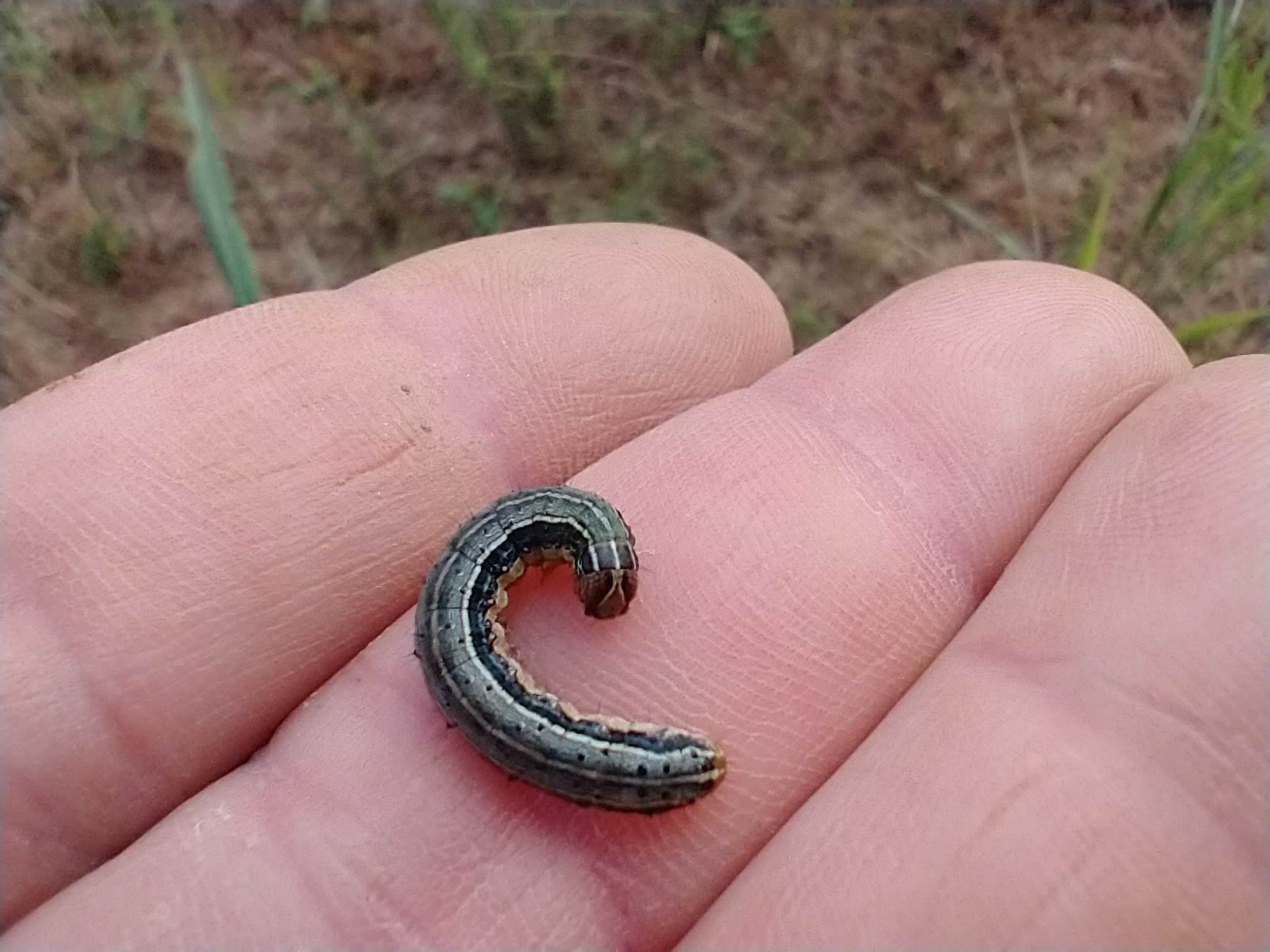Army Worms Are Marching!
go.ncsu.edu/readext?878719
en Español / em Português
El inglés es el idioma de control de esta página. En la medida en que haya algún conflicto entre la traducción al inglés y la traducción, el inglés prevalece.
Al hacer clic en el enlace de traducción se activa un servicio de traducción gratuito para convertir la página al español. Al igual que con cualquier traducción por Internet, la conversión no es sensible al contexto y puede que no traduzca el texto en su significado original. NC State Extension no garantiza la exactitud del texto traducido. Por favor, tenga en cuenta que algunas aplicaciones y/o servicios pueden no funcionar como se espera cuando se traducen.
Português
Inglês é o idioma de controle desta página. Na medida que haja algum conflito entre o texto original em Inglês e a tradução, o Inglês prevalece.
Ao clicar no link de tradução, um serviço gratuito de tradução será ativado para converter a página para o Português. Como em qualquer tradução pela internet, a conversão não é sensivel ao contexto e pode não ocorrer a tradução para o significado orginal. O serviço de Extensão da Carolina do Norte (NC State Extension) não garante a exatidão do texto traduzido. Por favor, observe que algumas funções ou serviços podem não funcionar como esperado após a tradução.
English
English is the controlling language of this page. To the extent there is any conflict between the English text and the translation, English controls.
Clicking on the translation link activates a free translation service to convert the page to Spanish. As with any Internet translation, the conversion is not context-sensitive and may not translate the text to its original meaning. NC State Extension does not guarantee the accuracy of the translated text. Please note that some applications and/or services may not function as expected when translated.
Collapse ▲Last year, Caldwell County and the entire east coast learned how damaging fall armyworms can be in lawns and hayfields. The fall armyworm is a tropical cutworm that feeds on several grass species. For this pest to be a problem in Caldwell County, adult moths have to be carried here by hurricanes or tropical storms from southern Florida. This pest does not survive the winter in Caldwell County.
Since damage was so unexpected and extensive last year, NC State Extension setup 11 monitoring sites across the State for fall armyworms. If adult moths are detected on the traps, alerts are sent to landscapers, turf managers, farmers, or anyone that has signed up for pest alerts at turffiles.ncsu.edu.
Normally, fall armyworms are not a problem in Caldwell County. Prior to last year, I have only seen damage to one yard in 2017 and to a newly seeded site in 2015. However, last year (2021), hundreds of lawns and several hayfields were severely damaged by this pest. Some lawns had to be reseeded because the tall fescue was killed. The fall armyworm monitoring system will provide an early warning so landscapers and farmers can better manage this pest.
Fall armyworms are approximately 1-1½ inches long, and can vary in color from a green to mottled brown to almost black. Fall armyworms have a wide black stripe running down each side of the body. They also have a very distinctive upside-down “Y” marking on the head capsule.

The inverted “Y” on the fall armyworm head capsule is unique to this pest. (credit: Seth Nagy)
This pest has a very wide host range but generally prefers grass, including coastal bermudagrass, fescue, ryegrass, bluegrass, Johnsongrass, timothy, corn, sorghum, Sudangrass, and small grain crops.
Fall armyworms that arrive in Caldwell County have overwintered in Florida. They migrate northward in the spring and summer, with each generation hopscotching northward. Female moths are carried north by winds and will lay as many as 1,000 eggs. These eggs hatch in 2-10 days into caterpillars. In large populations, fall armyworms can consume all the foliar tissue available and crawl in “armies”, devouring crops or turf stands. After the larvae feed for 2-3 weeks, they dig into the soil, pupate, and emerge as adult moths ready to lay eggs that will start the next generation.
Fall armyworm damage in turfgrass is very distinctive. Since armyworms cross the turf surface as a group, they create a noticeable line between damaged and undamaged turfgrass. Although fall armyworms do not have many specific preferences, newly-installed sod is more attractive and more susceptible to damage.
Fall armyworms can be more difficult to control than other caterpillar pests (true armyworms, black cutworms). When possible, mow and lightly irrigate the turf prior to treating. Insecticides are generally ineffective against large larvae (caterpillars), so be sure to note the size of the armyworms before making an application. Large larvae are likely to finish feeding and burrow into the soil to pupate, so only treat if larvae are relatively small.
Pyrethroids (particularly lambda-cyhalothrin), carbamates (carbaryl), and chlorantraniliprole will provide somewhat effective control against smaller larvae. For specific control information, check the https://www.turffiles.ncsu.edu/ website or contact us at the Caldwell Extension Center (828-757-1290).
# # #
— Seth Nagy is the Caldwell County Cooperative Extension director. The N.C. Cooperative Extension. Caldwell County Center, 120 Hospital Ave., #1 in Lenoir, provides access to resources of N.C. State University and N.C. A&T State University through educational programs and publications.




